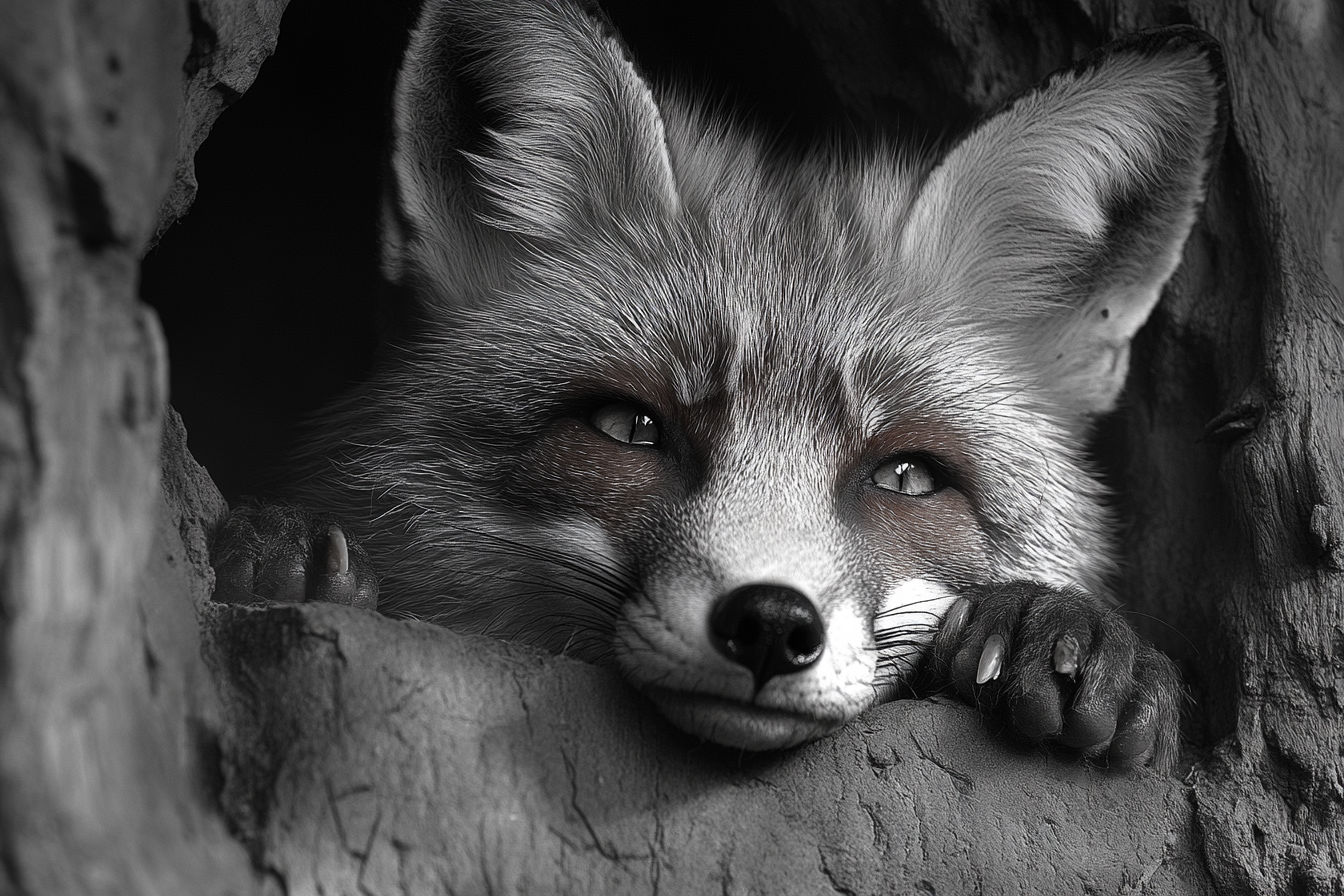Where Do Foxes Go to Die? Understanding Their Final Moments
Ever wondered where foxes go when they sense the end is near? Discover the reality behind their final moments and the myths about where foxes die.

This post may contain affiliate links. If you make a purchase through these links, we may earn a commission at no additional cost to you.
The question of where animals, including foxes, go to die is one that has intrigued humans for centuries. In the case of foxes, their behaviour and nature provide some insights into this mystery. While there is no specific or ritualistic place that foxes go to die, their instincts, environmental factors, and circumstances around their final days shape where they end up when they pass away.
Understanding their solitary behaviours, the risks they face, and the natural cycle of life and death can shed light on this enduring mystery.
Solitary Nature of Foxes
Foxes are highly territorial and solitary creatures, especially outside the breeding season. Unlike wolves or other pack animals, foxes prefer to live and hunt alone. This self-reliance is deeply ingrained in their survival strategies and also influences their behaviour during their final days.
Seeking Seclusion
When a fox is ill or nearing the end of its life, it instinctively seeks a quiet, hidden place. These spots might include areas with dense underbrush, hollow logs, rocky crevices, or thick vegetation. This natural seclusion provides two key benefits:
- Protection from predators: A vulnerable fox can avoid being an easy target by hiding in an area where it is difficult to be seen or reached.
- Safety from the elements: Sheltered locations help protect a weakened fox from harsh weather conditions, offering a peaceful place for its final moments.
Return to Old Dens
In some cases, foxes may return to familiar dens when they are too weak to continue roaming. These dens—often dug into hillsides, woodlands, or urban landscapes—serve as places of comfort and security. However, since foxes tend to live independently and move dens frequently, it is uncommon for a fox to die within its den unless illness or injury renders it immobile.
Predation and Natural Death
Life in the wild is perilous, and foxes face numerous threats that prevent many from dying of old age.
Predation Risks
Despite being skilled hunters, foxes are also prey to larger predators, including wolves, coyotes, and eagles. A sick, injured, or elderly fox is at a greater risk of predation, as it can no longer defend itself or flee as easily. This typically means that many foxes do not reach a secluded place to die naturally but instead fall victim to predation.
Death from Natural Causes
When a fox succumbs to natural causes such as disease or ageing, it is likely to do so in a hidden location. Since foxes are small and well-camouflaged, their bodies often go unnoticed in the wild. Decomposition occurs quickly, and scavengers such as crows, foxes themselves, and insects may feed on the remains. As a result, fox carcasses rarely remain visible for long, quickly blending into the ecosystem’s natural recycling processes.
Death in Urban Areas
Urban and suburban environments pose different challenges for foxes compared to the wild. As fox populations adapt to human development, their interactions with people, vehicles, and other urban dangers influence their survival and death.
Traffic Accidents
One of the most common causes of death for urban foxes is traffic accidents. Foxes, like other wildlife, often cross roads searching for food, mates, or new territory, making them vulnerable to being struck by vehicles. In these instances, foxes usually die on or near roadsides. These remains are frequently discovered by people and removed by local authorities.
Human Interaction
Human activities can also result in the deaths of urban foxes. Examples include:
- Poisoning: Some foxes may inadvertently consume toxic substances, such as rat poison or contaminated food.
- Trapping and culling: In certain areas, foxes may be targeted by pest control measures or hunting.
These events tend to occur in more visible areas where foxes frequently forage, such as gardens, rubbish bins, or urban parks.
Urban Seclusion
Despite the risks, urban foxes may still exhibit their instinct to seek secluded areas when nearing death. Abandoned buildings, quiet backyards, and dense vegetation in parks can provide similar shelter to what they might find in the wild. These places allow urban foxes to die in relative peace, away from human disturbance.
The Myth of a “Fox Graveyard”
Throughout history, myths and folklore have suggested that animals, including foxes, go to specific places to die—often referred to as “animal graveyards.” While these stories are captivating, scientific evidence does not support them.
Reality vs Myth
In reality, death for wild animals like foxes is often unpredictable and circumstantial. A fox may die wherever it happens to be presently it succumbs to illness, injury, or predation. There is no conscious or ritualistic decision involved in selecting a “final resting place.”
Cultural Interpretations
Some cultures have romanticised animal behaviour, weaving stories of creatures going to sacred or hidden places to die. These tales, while enriching folklore, are rooted in human imagination rather than observable animal behaviour. Scientific studies of foxes and other wildlife have found no evidence of such practices.
Decomposition and Ecosystem Role
When a fox dies, its body does not go to waste. Instead, it becomes part of the natural cycle of life, contributing to the ecosystem through decomposition and nutrient recycling.
Scavengers at Work
Dead foxes attract a variety of scavengers, including:
- Birds of prey and crows, which may quickly pick at the remains.
- Insects, such as beetles and flies, that break down flesh.
- Other predators that consume any leftover parts.
This process ensures that a fox’s death supports other forms of life in the ecosystem.
Natural Recycling
In secluded areas where scavengers may not immediately find a fox’s body, natural decomposition takes over. Over time, the body returns essential nutrients to the soil, enriching plant life and supporting biodiversity. This ongoing cycle highlights the interconnectedness of life and death in nature.
Conclusion
Foxes do not have a specific place they go to die. Instead, their solitary instincts guide them to seek secluded or sheltered spots when they are near death. In urban areas, foxes often die in more visible locations due to traffic accidents or human interactions. While the myth of a “fox graveyard” persists in folklore, it has no scientific basis. Ultimately, a fox’s death contributes to the greater ecosystem, playing a vital role in the natural cycle of life and renewal. Understanding this process helps us appreciate the delicate balance of the natural world and the hidden lives of these fascinating creatures.






